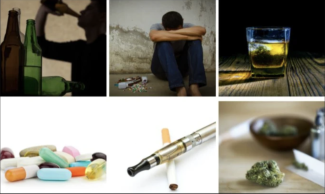Stigmatizing imagery for substance use disorders: a qualitative exploration

Background
Stigma is a significant barrier to the treatment of individuals with substance use disorders. While prior efforts have been made to change stigmatizing language to refer to individuals with substance use disorders (SUD), little is known about the effects of stigmatizing imagery. There is a need for complementary qualitative research to identify both stigmatizing and non-stigmatizing imagery in the field of SUD.
Methods
This study used qualitative methods to identify stigmatizing and non-stigmatizing imagery for SUD and explore the reactions of people with lived experience with SUD to SUD-related imagery. We conducted focus groups and brief semi-structured qualitative interviews with 14 individuals in recovery from a range of SUD.
Results
Participants identified images of substance use and criminal justice contact that are negative or stigmatizing, along with alternative images that were endorsed for use. The unanticipated concept of imagery-induced triggering and cue reactivity emerged in the interviews, along with an emphasis on diversity in race/ethnicity, gender, and age for representations of both patients and clinicians in all imagery.
Conclusions
The findings can be helpful in informing imagery that can depict addiction, individuals with SUD, and individuals involved in the justice system for various fields from research to media, public health, and community-based programming. Based on qualitative feedback from patients on triggering effects and reactivity to visual cues, it is never appropriate to use drug use and drug paraphernalia imagery to depict substance use or misuse or pictures of people in cages.
Full article (PDF)
